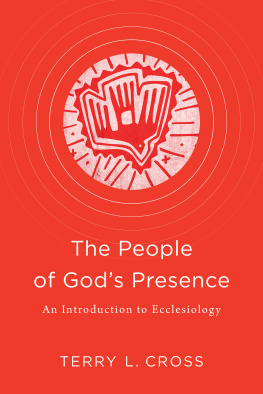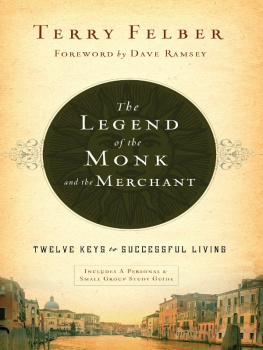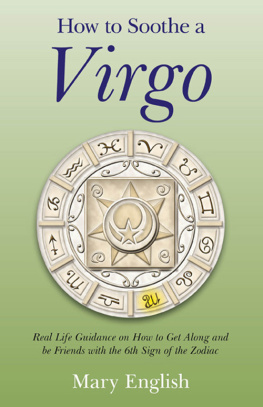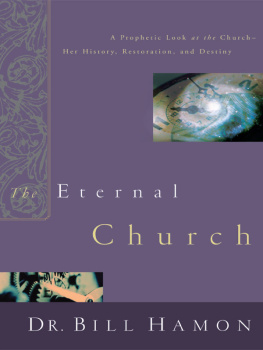Terry Virgo - Restoration in the Church
Here you can read online Terry Virgo - Restoration in the Church full text of the book (entire story) in english for free. Download pdf and epub, get meaning, cover and reviews about this ebook. year: 1985, publisher: Kingsway Publications, genre: Religion. Description of the work, (preface) as well as reviews are available. Best literature library LitArk.com created for fans of good reading and offers a wide selection of genres:
Romance novel
Science fiction
Adventure
Detective
Science
History
Home and family
Prose
Art
Politics
Computer
Non-fiction
Religion
Business
Children
Humor
Choose a favorite category and find really read worthwhile books. Enjoy immersion in the world of imagination, feel the emotions of the characters or learn something new for yourself, make an fascinating discovery.

- Book:Restoration in the Church
- Author:
- Publisher:Kingsway Publications
- Genre:
- Year:1985
- Rating:4 / 5
- Favourites:Add to favourites
- Your mark:
- 80
- 1
- 2
- 3
- 4
- 5
Restoration in the Church: summary, description and annotation
We offer to read an annotation, description, summary or preface (depends on what the author of the book "Restoration in the Church" wrote himself). If you haven't found the necessary information about the book — write in the comments, we will try to find it.
Restoration in the Church — read online for free the complete book (whole text) full work
Below is the text of the book, divided by pages. System saving the place of the last page read, allows you to conveniently read the book "Restoration in the Church" online for free, without having to search again every time where you left off. Put a bookmark, and you can go to the page where you finished reading at any time.
Font size:
Interval:
Bookmark:
Copyright Terry Virgo 1985
First published 1985
Reprinted 1985
Reprinted 1987
Reprinted 1988
All rights reserved.
No part of this publication may be reproduced or transmitted in any form or by any means, electronic or mechanical, including photocopy, recording, or any information storage and retrieval system, without permission in writing from the publisher.
ISBN 086065 387 0
Unless otherwise indicated, biblical quotations are from the New American Standard Bible The Lockman Foundation 1960,1962,1963,1968,1971,1972,1973
AV = Authorized Version crown copyright
RSV = Revised Standard Version copyrighted 1946,1952, 1971,1973 by the Division of Christian Education of the National Council of the Churches of Christ in the USA
PHILLIPS = The New Testament in Modern English by J. B. Phillips, J. B. Phillips 1958
NIV = New International Version New York International Bible Society 1978
Front cover photo: J. C. Lozouet, The Image Bank
Printed in Great Britain for KINGSWAY PUBLICATIONS LTD, Lottbridge Drove, Eastbourne, E. Sussex BN23 6NT by
Richard Clay Ltd, Bungay, Suffolk. Typeset by Nuprint Services Ltd, Harpenden, Herts.
I dedicate this book to the man who calls me his 'son in the Lord', deeply grateful that God ever gave me such a wonderful pastor as E. G. Rudman.
His personal devotion to the Lord has always inspired me and his constant faithfulness and encouragement to me when I seem to have turned upside-down so many things which he held dear have been a source of great joy.
In his old age he has become a true Simeon. Not content to be only righteous and devout, he is still looking with openness and expectation - pointing the way to others.
I owe an enormous debt of gratitude to many. My heartfelt thanks go to my friends and colleagues in ministry who have continually exhorted me to keep writing when other demands seemed to say it was impossible.
I am deeply grateful for all those whose words and lives have helped shape my thinking and clarify my vision. Many a burden expressed in this book has its origin in the inspiration of other servants of God too numerous to name.
I thank God for the church at Clarendon, so faithful in their prayer support.
Thanks to Arthur Wallis for being the man he is and for graciously agreeing to write the Foreword for this book.
Pam Haworth, my secretary deserves special thanks for typing and retyping pages of manuscript.
My thanks to my chief helper and main source of encouragement, Wendy, my wife. I found a good thing!
Finally my thanks to my children, Ben, Anna, Joel, Simon and Timothy for their patience throughout my long sessions in the study.
It was in the late sixties that groups of Christians seeking the restoration of the church began to surface in Britain. To the casual observer the prominent feature was that Christians were worshipping in their homes rather than in traditional church buildings. It was almost inevitable that it should become known as 'the house-church movement'. On two counts this was something of a misnomer. In the first place the use of the home for worship was not the root of this tree of God's planting, but only one of the minor branches.
As far as the use of the home is concerned, leaders had rejected the 'consecrated building' concept, in the conviction that:
Where'er they seek thee thou art found,
And every place is hallowed ground.
They also saw that meeting in the home was not only a New Testament practice, but had great practical advantages over the formal church setting, especially where numbers were small.
'The house-church movement' was also a misnomer because there was no sense in which they viewed the home as sacrosanct, as far as the gathering of the church was concerned. Consequently, as the churches grew - and they did so with rapidity - there was no problem in moving to more commodious venues, such as schools, community centres, town halls, or even to purchase disused church buildings. When this happened they still retained the home for the smaller home groups who met mid-week, having discovered the great value of these smaller settings.
Soon traditional churches of the more progressive variety were following suit, and breaking down into smaller groups meeting in the homes mid-week for Bible study, prayer and fellowship. Thus home meetings became even less a distinctive feature of 'the house-church movement'.
If the use of the home is but a branch of this tree, what is the root? In a word, it is a diligent attempt to restore the church to New Testament Christianity, both in principle and in practice. Behind all that you will read in this book is the deep conviction that God has not left us without witness as to how he would have his house ordered. The New Testament provides us with principles, with examples and with corrective teaching, but not with an inflexible pattern or blueprint.
The author makes no boast that he has covered it all or that he knows it all. 'God is continually widening our horizons,' he says. He would be the first to admit that what has been discovered is not being perfectly implemented. We are all frail, finite vessels, who stand in continual need of the grace of God.
I want to commend this book wholeheartedly, and for a number of reasons. In the first place, Terry Virgo is a close friend and colleague, and I know that his life and ministry is in itself a practical demonstration of what he is writing about. He does not speak from theory but from experience. He shares with great candour his own inner struggles as he sought to follow God's leading in those early years, and bring a congregation for which he was responsible into the freedom of life in the Spirit. What he has raised up under God in the church in Hove, and in many other congregations, bears eloquent testimony to what he is advocating.
The second reason is that what he is setting forth is now being demonstrated in many other parts of the world. When we find restoration-type churches, that have quite independently discovered the same truths and have begun to operate on the same basis, we can only conclude that this is the spontaneous working of God.
It follows directly from this that restoration principles are proving to be not only biblical, but also successful. Where almost all denominational churches in the UK are showing serious decline in numbers, and others are struggling to keep their chins above water, restoration-type churches, without any central headquarters, and involving many different streams and emphases, are growing by leaps and bounds. The fastest church growth in the world - some believe the fastest in the history of the church - is the house-church movement of China. And the fact that it has had no connection with house churches outside of that land, simply emphasizes once again that we are seeing a worldwide movement of the Holy Spirit.
I pray that God will use this book to cause many to face questions from which they might naturally shrink, such as, 'What is God saying to his people through these new churches that are emerging?' and 'What does he want us to do about it?'
Arthur Wallis
'If I become a Christian do I have to go in there?' The boy was pointing at the church next door. We had transformed the church hall into a coffee bar that looked like a barn. Straw carpeted the floor and boxes and bales of hay served as tables and chairs. A relaxed and welcoming atmosphere had been created and local young people had flocked in.
Two young men I was speaking to had become very interested in the gospel, but here was the great stumbling block. Would they have to 'go to church' if they became Christians. The gospel of the Lord Jesus had become a gripping reality, but the thought of 'going in there' appalled them. As a zealous young evangelist I replied, 'Don't look at the church, look at Jesus.'
Font size:
Interval:
Bookmark:
Similar books «Restoration in the Church»
Look at similar books to Restoration in the Church. We have selected literature similar in name and meaning in the hope of providing readers with more options to find new, interesting, not yet read works.
Discussion, reviews of the book Restoration in the Church and just readers' own opinions. Leave your comments, write what you think about the work, its meaning or the main characters. Specify what exactly you liked and what you didn't like, and why you think so.








